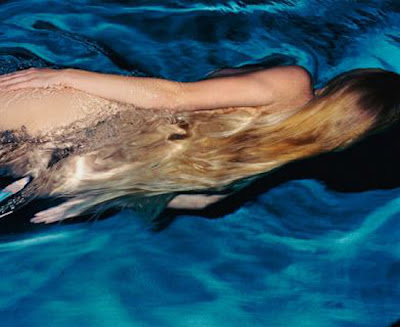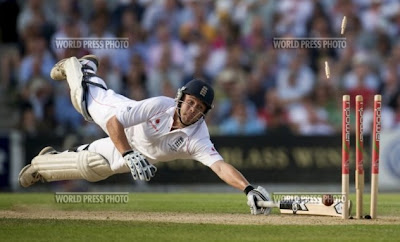Ansel Adams is one of the most respected names in photography. During his lifetime he produced hundreds of images that became familiar across the world, as tributes to the epic landscapes of North America. Ansel Adams is most well known for his innovative and brilliant black-and-white photos in landscape photography.
Photographs, for Adams, should be sharp, clear depictions, not blurry abstractions in imitation of paintings. Adams’s photographs attempted at setting out the stall of photography as an art form in its own right, with a unique aesthetic value.
The contributions of Ansel Adams to the world of photography go beyond pretty pictures of landscapes and natural forms. One of Ansel Adams' most famous techniques that resulted in landscape pictures that undeniably displayed the wonders of wilderness is known as the “Zone System”. It is a difficult technique that worked around the limits of the camera lens and the film development process. The Zone System is a way to manipulate the tonality of the images and capture the stark and vivid contrasts in nature that could never by recorded by the camera’s limited capabilities. With Ansel Adams’ technique, shooting a rocky landscape will bring out the shadows of crevices, the brightness of the snowcaps, the vivid blue of the sky and the softness of the clouds. His written technical photography manuals are still regarded as influential and relevant in the modern era.
| 1. The Tetons and the Snake River (1942) - BY Ansel Adams |
| 2. Lower Yosemite Fall - BY Ansel Adams |
| 3. Clearing Storm, Sonoma County Hill - BY Ansel Adams |
| 4. Stream, Sea, Clouds, Rodeo Beach - BY Ansel Adams |
| 5. Winter Sunrise, from Lone Pine - BY Ansel Adams |
 |
| 6. Evening, McDonald Lake, Glacier National Park - BY Ansel Adams |
As I mentioned above, Ansel Adams was a strong influence in the world of photography, not just because of the beauty of his landscape pictures and the superiority of his skills but also because of the supremacy of his techniques and the enduring legacy of his images. There are great deals of landscape photographers who see Adams as a mentor, and established their own styles further. From the works of these photographers, you can still see the shadow of Ansel Adams who has influenced landscape photography profoundly and deeply.
The following photographs by different photographers show the influence of Ansel Adams’ work in black and white landscape photography.
 |
| Gates of the Valley - BY Alan Ross |
 |
| The Tetons and the Snake River (1942) - BY Ansel Adams |
The fine photographs of Alan Ross can be experienced as sophisticated black-and-white still lifes or grand landscapes. His work is reminiscent of his teacher, Ansel Adams, yet has a distinct personal style.
This photo especially remind me of the work “The Tetons and the Snake River (1942)” by Ansel Adams. The angle of the clouds, even the feel of the mountains, is somehow resembled. You can say that it is definitely an application of Adams’ “Zoon System”. The shadows of crevices and the softness of the clouds are similarly portrayed as in Adams’ works. However, compared to the master’s work of “The Tetons and the Snake River (1942)”, the “Gates of the Valley” by Alan Ross seems less sophisticated in controlling the tonality of the image. After all, the peacefulness of the valley is just expressed as well as the majesty of the river in Adams’ work.
 |
| Bridalveil Fall - BY Bob Kolbrener |
 |
| Lower Yosemite Fall - BY Ansel Adams |
Bob Kolbrener was born in St. Louis, Missouri in 1942 and graduated from Washington University in 1963. His passion for fine art black and white photography began in 1968 when he innocently wandered into Best’s Studio (now The Ansel Adams Gallery) in Yosemite National Park. The magnificence of the Ansel Adams original prints was overwhelming, and he has been captivated by photography since.
It can be easily tell that Bob Kolbrener’s photo “Bridalveil Fall” is a reflection of the “Lower Yosemite Fall” by Ansel Adams. Even though the “Bridalveil Fall” is shooting from a similar angle, similar foreground and background, the shadows of mountains or the brightness of the fall water are still built with less of “the stark and vivid contrasts in nature” as is in the “Lower Yosemite Fall”. In Ansel Adams’ “Zone System”, he developed ten zones with Zone 0 as pure black and Zone 9 as pure white. The critical point is the use of camera lens to recognize the Zone and the control of film development time. As inspired by the beauty of Adams’ photo and his technique, Bob Kolbrener learned, and mastered, Adams’ technical aspects: viewpoint, lighting, foreground, and background, as well as the exposure and importance of film development. The “Bridalveil Fall” is a good example.
3.
 |
| Tenaya Lake Clouds - BY John Sexton |
 |
| Evening, McDonald Lake, Glacier National Park - BY Ansel Adams |
John Sexton is one of the most widely known contemporary black and white landscape photographers and educators. He was Photographic Assistant to Ansel Adams for many years, and his work, in high demand, demonstrates the technical and artistic expertise that one would expect from such an association.
John Sexton’s work “Tenaya Lake Clouds” may recall us of Ansel Adams works in many ways. From this photograph, we can feel the peacefulness in Adams’ “Evening, McDonald Lake, Glacier National Park”, the brightness of the snowcaps, the vivid blue of the sky and the softness of the clouds in most of Adams’ works. Although his work may remind us of Ansel Adams, John Sexton has a very distinctive feel and is immediately recognizable. The brilliance of John Sexton’s work is no less than Adams. In a way, we can say that he has stepped out of the shadow of his mentor and established a personal style and a worldwide reputation.
 |
| Winter Snowstorm, Yosemite Valley - BY Ray McSavaney |
 |
| Clearing Storm, Sonoma County Hill - BY Ansel Adams |
Ray McSavaney, born in Los Angeles studied architecture and design. His interest in photography began around 1970 as a form of documenting backpacking trips in the Sierra Nevada mountain range and intensified in 1972 when he attended his first Ansel Adams Yosemite Workshop.
This “Winter Snowstorm, Yosemite Valley” gives me a similar feeling as is in the “Clearing Storm, Sonoma County Hill” by Ansel Adams. It did portray the brightness of the snow and the softness of the clouds as Adams’ work does. However, the darkness of the sky and brightness of the snow covered ground is not normally Adams’ point of contracts in nature. Ray McSavaney was inspired by Ansel Adams in some level, but developed further and tended to stress his own style after all.
 |
| Garrapata Beach - BY Patrick Jablonski |
In his photograph “Garrapata Beach”, you can see hints of these technical and visionary influences as he formulates his own interpretations of the natural scene. The mysterious feel he portrayed is similar as in Adams’ “Clearing Storm, Sonoma County Hill”, but more. Also, the softness of clouds is more than any photograph of Adams. Even though the view points of the two photographers are different, the subjects they are portraying are somehow similar. They are both well recognized by their black and white photographs of nature. While Patrick Jablonski is lightly influenced and inspired by Ansel Adams, he is more innovated and emphasized on his own style.
Overall, Ansel Adams loved his subject - “nature” with great passion. The famous landscape pictures taken by Ansel Adams are not just photos of the wilderness; they are iconic images of America. They became powerful tools in preserving the country’s beautiful habitats.
Markusic, M. (2010, May 17). Ansel Adams and Landscape Photography. Retrieved April 5, 2012, from Bright Hub Inc, http://www.brighthub.com/multimedia/photography/articles/33571.aspx
Black & White Photography. (n.d.). Retrieved April 5, 2012, from The Ansel Adams Gallery, http://www.anseladams.com/category_s/13.htm






.jpg)









.jpg)